Crassula lactea
Crassula lactea Aiton
Family: Crassulaceae
Common names: tailor’s patches (Eng.), kransplakkie (Afr.)
Introduction
Crassula lactea is a freely branching, mat-forming succulent becoming a cliff-hanger, with stems up to 400 mm long, sessile, dull green leaves and rounded heads of small star-shaped whitish flowers in winter. It has been recorded from the Western and Eastern Cape and southern KwaZulu-Natal. Easily propagated and grown in containers or rockeries.
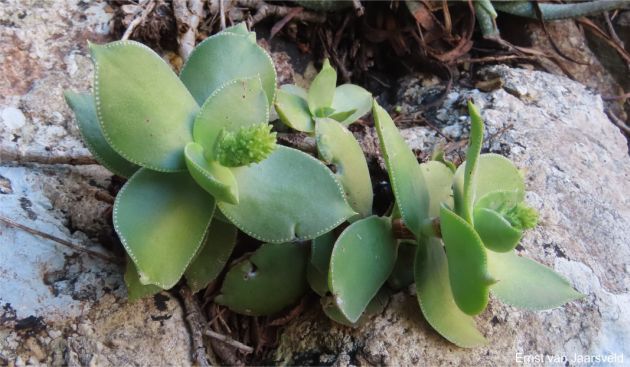
Fig. 1. Crassula lactea growing on a cliff at the Kouga Dam, after rain. Note the white dots along the leaf margin, which are salt-excreting hydathodes, that give the leaves a stitched appearance.
Description
Description
The plants are spreading, moderately to densely branched, with 3–8 decumbent branches forming loose mats, becoming pendent from cliffs. A plant may reach up to 100 mm height and 400 mm in diameter. Stems 8–10 mm in diameter, younger stems green, older stems reddish-brown, spreading, becoming pendulous. The older leaves persistent, the internodes 6–10 mm long. Leaves sessile, egg-shaped, 30-40 (60), 20–33 mm, flat to slightly biconvex when turgid, spreading at right angles but slightly incurved, the tip somewhat pointed. The leaf surface is smooth, dull.
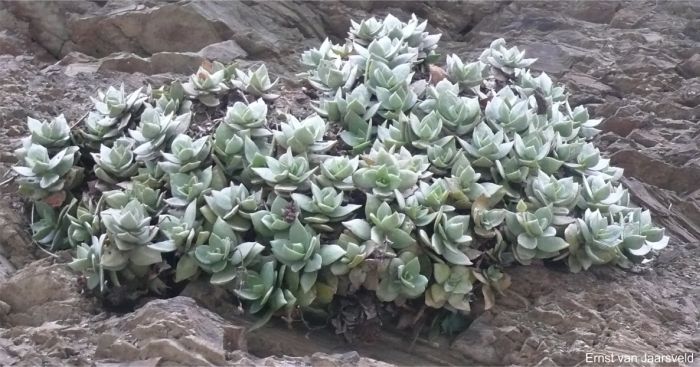
Fig. 2. A much-branched cliff-hugging cluster of Crassula lactea in summer on a shale cliff along the Bloukrans Pass, Eastern Cape.
The inflorescence a short, cylindrical to pyramidal, terminal thyrse, the peduncle 40-100 mm long, bearing many 5-merous, star-shaped, pedicellate, whitish flowers in groups (dichasia). The pedicels are short. The calyx lobes are linear subulate 1.5-3 mm long with sharp tips. The floral lobes (corolla) are white or off-white sometimes tinged red near the tips, lanceolate to linear lanceolate, 4-8 mm long, sharply pointed. The stamens with purple anthers. The nectar glands (squamae) are transversely oblong 0.2-0.3 mm x 0.5-0.7 mm, thick, fleshy, white to pale yellow. Flowering time is in winter (May to July).
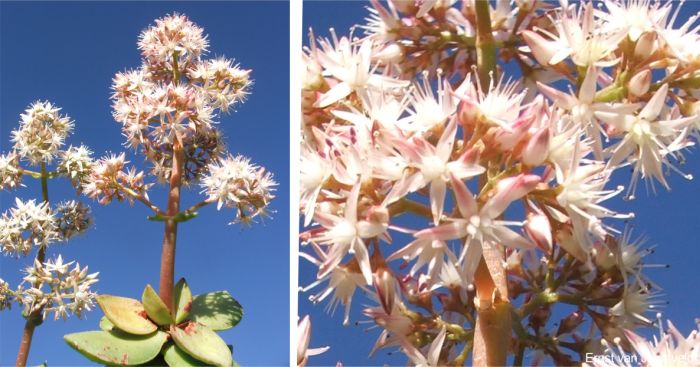
Fig. 3. Crassula lactea in flower in winter in the succulent collection at Kirstenbosch National Botanical Garden.
Conservation Status
Status
Crassula lactea is locally common, widespread and well protected in its cliff habitat, consequently it is not threatened, and is assessed as Least Concern (LC) by the Red List of South African Plants.

Fig. 4. Crassula lactea hanging from sheer cliffs LEFT with Gasteria rawlinsonii in the Baviaanskloof, Eastern Cape and RIGHT in the lower Gouritz River, near the Bridge along the N2, Western Cape.
Distribution and habitat
Distribution description
Crassula lactea occurs from the Gouritz River near Albertinia in the Western Cape to Port Shepstone in southern KwaZulu-Natal. It can be found in dry river valleys growing on rock outcrops and sheltered cliffs associated with subtropical thicket or savanna vegetation, often in the shade of shrubs or trees, from 50–800 m altitude. Although it is not an obligatory cliff dweller, most of the population is found on cliffs. The vegetation in its habitat consists of Eastern Valley Bushveld (Savanna biome) as well as Albany Thicket in the Eastern Cape. Crassula lactea has been recorded on most aspects but more commonly on sheltered south-facing rock faces (southern hemisphere). It can be found on different substrates including sandstone, shale and conglomerate (pH neutral to acidic). Plants are firmly rooted in crevices and shallow soil on bedrock. It is usually locally abundant. Temperatures are moderate to high in summer and can reach 40°C. Winters are cooler but frost is absent. The average daily maximum temperature is 25–26°C and the average daily minimum for the region 9–10°C. Rainfall is mainly during summer but in the eastern portion of the coastal Western Cape it can occur also in winter (cyclonic), ranging from 250–800 mm per annum.
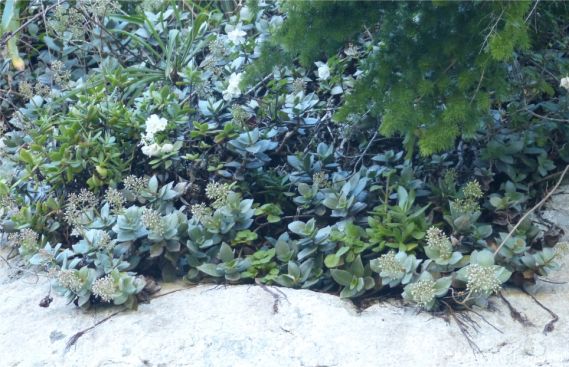
Fig. 5. Crassula lactea in habitat in the Eastern Cape growing on shale cliffs along the lower Mtata River together with Crassula cultrata, Chlorophytum comosum, Asparagus aethiopicus and Dombeya cymosa branch in flower.
At Natures Valley, plants grow on shale cliffs in a mosaic of thicket and Afromontane Forest, sharing the habitat with cliff-dwelling succulents that include Carpobrotus deliciosus, Crassula perforata and Albuca bracteata (= Ornithogalum longibracteatum). At the Msikaba River further north, plants grow on shale cliffs and associated plants include Caputia medley-woodii, Coleus madagascariensis, Cotyledon flanaganii subsp. mzimvubuensis, Crassula perforata, Crassula perfoliata, Gasteria loedolffiae, Pyrrosia africana, Plectranthus strigosus and Rhipsalis baccifera.
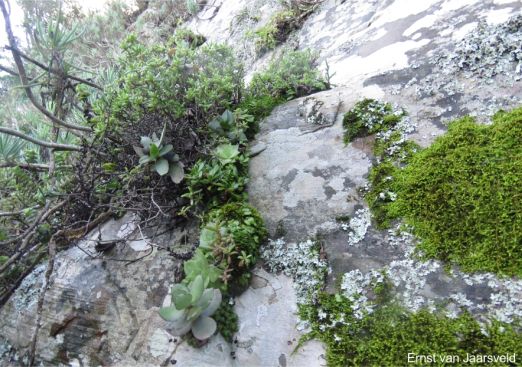
Fig. 6. Crassula lactea in habitat on a cliff along the Kei River, Eastern Cape, with Haworthia cymbiformis var. setulifera and Curio ficoides.
Derivation of name and historical aspects
History
The name Crassula is the diminutive of the Latin crassus, which means thick or fat, referring to the fleshy nature of the genus. The species name lactea (Latin), meaning milk alludes to the distinctive white dots (hydathodes) at regular intervals on the edge of the leaf, through which excess moisture is excreted leaving salts on the leaf. These dots give the leaves a stitched appearance, which has earned it the common name Tailor’s Patches. Crassula lactea was named by William Aiton (1731-1793), first Director of the Royal Botanic Gardens at Kew, in the first volume of Hortus Kewensis in 1789 from plants collected and introduced to England by Francis Masson in 1774,. Masson, a horticulturist from the Royal Botanical Garden, Kew, was sent to the Cape by Sir Joseph Banks to collect plants. He travelled widely, was an intrepid plant collector, who collected many plants new to science and introduced many Cape plants to Kew and was responsible for naming the quiver tree, Aloidendron dichotomum. The genus Crassula is very well represented in South Africa, where there are more than a 100 species, and the majority occur in the southern and western parts.

Fig. 7. Close-up of a leafy branch of Crassula lactea growing on a shale cliff with with Haworthia retusa var. turgida and Cotyledon hybrid at Valsriviermond, Gouritz River, Western Cape.
Crassula lactea belongs to section Anacampseroideae, which was created by Adrian Haworth in 1821 to accommodate the species with star-shaped flowers 2-10 mm long with spreading lobes at right angles to the pedicles, the petals without a dorsal appendage but sometimes hooded and anthers pink to lilac. Toelken acknowledges 10 species as belonging to this section: Crassula arborescens, C. cordata, C. crenulata, C. inandensis, C. lactea, C. multicava, C. ovata, C. pellucida, C. sarmentosa and C. streyi. Most of these species are frequently found in cultivation, the kerkei (Crassula ovata) is the largest species in the genus Crassula and perhaps the best known and often used as a hedge plant in South Africa and a pot plant all over the world.
Crassula lactea is related to both C. multicava and C. streyi. Crassula lactea is at once distinguished from C. multicava by its leaves which are markedly more succulent, rigid and the row of whitish dots (hydatodes) along its leaf margin. Crassula lactea also grows much more slowly than C. multicava, and is more difficult to grow. Crassula multicava forms dense mats, and with more or less 4 lobed flowers and its inflorescence is covered in adventitious buds, and is the most widespread of the two. Crassula streyi is a robust, sparingly branched plant, with leaves 40-65 mm long, often mottled, and yellowish-green flowers with a reddish central vein. It is confined to cliffs in northern Pondoland (Eastern Cape and KwaZulu-Natal).
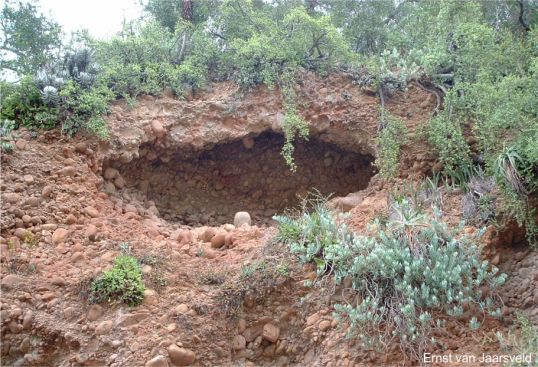
Fig. 8. Crassula lactea habitat at Enon, Eastern Cape, on an Enon Conglomerate cliff face, sharing its habitat with Portulacaria afra, Curio ficoides, Caputia pyramidata and Aloe speciosa.
Ecology
Ecology
Crassula lactea is a long-lived succulent, spreading to drooping from cliff faces (cliff-hanger). The stems are flexible becoming pendulous or subpendulous. The leaves and stems are succulent, aiding the plant during periods of drought and the dry winter months. The leaves are persistent and long-lived, an adaptation to the xeric cliff conditions. The inflorescence is spreading elongated to triangular, with conspicuous white flowers in winter. Pollination of the conspicuous white flowers is by insects. The follicles are dehiscent, and seeds spontaneously released in spring and dispersed by wind and updrafts on the cliff face. Their dispersal coinciding with the spring and summer rains, maximising establishment.
The spreading growth, ensures vegetative increase and branches will occupy new crevices by active growth. The stems may develop aerial roots. The branches are brittle, and when blown from a cliff face and landing in a crevice, will root. This vegetative increase is an effective backup growth strategy ensuring long-term survival on the cliff.
Very conspicuous are the white leaf dots (hydathodes) along the leaf margin, which give the leaf a stitched appearance and the ability to excrete excessive moisture, which evaporates, leaving salt behind.

Fig. 9. Crassula lactea in habitat on a cliff at the Keiskamma River, Western Cape, growing with Pyrrosia africana and Streptocarpus meyeri.
Uses
Use
It is not known whether the plants are used medicinally.
Growing Crassula lactea
Grow
Crassula lactea is occasionally cultivated and makes a beautiful pot plant. Best for thicket, bushveld and succulent karoo gardens, grown in rockeries, on embankments or as a pot plant. Outside its native habitat, it is best in containers grown under controlled conditions in a greenhouse. Easily cultivated and prefers dappled shade. Grow in a preferably light or dappled shade environment. Best grown in a well-drained site. Add ample compost or a liquid organic fertiliser. Water well, but allow plants to dry out for some time before watering again. The stored moisture in their leaves and stems allows succulents to survive when no soil moisture is present.
Propagate from cuttings or seed. Best propagated by stem or leaf cuttings at any time of the year but rooting is faster in spring or summer. Plant cuttings of 4-8 cm length in a sandy soil. The roots sometimes can be affected by mealybug, treat accordingly. Seed is fine and can be sown in a sandy mixture. Sow seed in spring and cover with a very thin layer of gravel. Keep moist. Remove seedlings as soon they are large enough to handle.
References
- Aiton, W. 1789. Crassula lactea. Hortus Kewensis 1:396. Accessible at: https://www.biodiversitylibrary.org/item/23432#page/426/mode/1up.
- Christenhusz, M.J.M., Fay, M.F. & Chase, M.W. 2017. Plants of the World, an illustrated Encyclopedia of vascular plants. Kew Publishing, Royal Botanic Gardens, Kew.
- Eggli, U. (ed.) 2003. Illustrated handbook of succulent plants: Crassulaceae. Springer, Berlin.
- Mucina, L. & Rutherford, M.C. (eds) 2006. The vegetation of South Africa, Lesotho and Swaziland. Strelitzia 19. South African National Biodiversity Institute, Pretoria.
- Rowley, G. 2003. Crassula: a growers guide. Cactus & Co. Vista, California.
- Toelken, H.R. 1985. Crassulaceae. Flora of Southern Africa 14: 1–244.
Credits
Ernst van Jaarsveld
Kirstenbosch National Botanical Garden (Retired)
Babylonstoren Farm (Current)
Extraordinary senior lecturer and researcher,
Department of Biodiversity and Conservation, University of the Western Cape
November 2025
Plant Attributes:
Plant Type: Succulent
SA Distribution: Eastern Cape, KwaZulu-Natal, Western Cape
Soil type: Sandy, Loam
Flowering season: Winter
PH: Acid, Neutral
Flower colour: White, Cream
Aspect: Full Sun, Shade, Morning Sun (Semi Shade), Afternoon Sun (Semi Shade)
Gardening skill: Easy
Special Features:
Horticultural zones
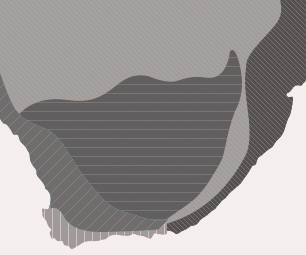







Rate this article
Article well written and informative
Rate this plant
Is this an interesting plant?
Login to add your Comment
Back to topNot registered yet? Click here to register.